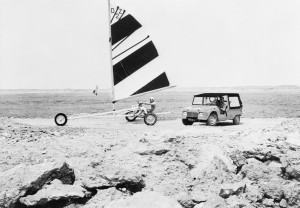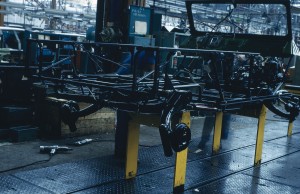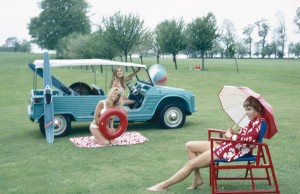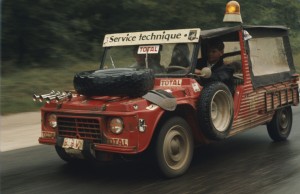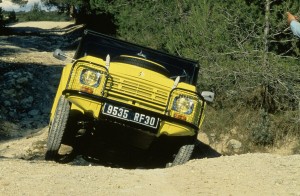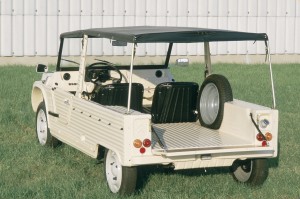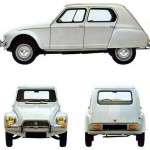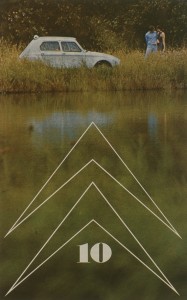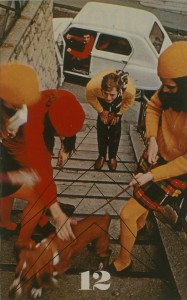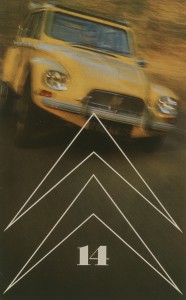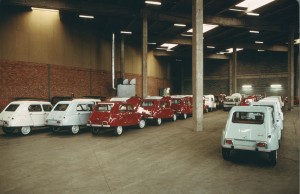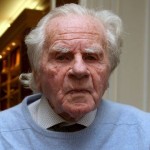
(English below, Francais au-dessous)
Roland Paulze d’Ivoy de la Poype (geboren 28. Juli 1920 in Les Pradeaux / Frankreich) ist vor wenigen Tagen im Alter von 92 Jahren am 23. Oktober 2012 in Saint-Tropez (Frankreich) verstorben. Seinen großen Ruf erwarb er als Jagdflieger im 2. Weltkrieg – sein Regiment “Normandie-Niémen” erbrachte 273 nachgewiesene Siege bei insgesamt 5.240 Einsätzen, davon 869 Luftschlachten und nur einem eigenen Abschuss – bevor er 1947 aus der Armee austrat.
Als Visionär erkannte er früh, daß Kunststoffe eine zukunftsweisende Bedeutung haben würden. In seiner zivilen Karriere gründete und leitete er die “Société d’Etudes et d’Applications du Plastique” (SEAP) ab Mai 1947. Neben der Entwicklung von Einwegverpackungen (z.B. die berühmte “Berlingot DOP”, eine von Vasarely entworfene bonbongrosse kissenförmige transparente Ein-Portion-Verpackung für Shampoos von L’Oreal, die seine Firma 1952 erstmalig produzierte) für flüssige und emulgative Produkte. Weitere Firmengründungen und Übernahmen führten dazu, daß de la Poype ein Imperium für Emballagen und -Technologien etablieren konnte, was ihn zu einem der herausragendsten und bedeutendsten Industriellen des 20. Jahrhunderts werden ließ.
Für die Citroënisten hat de la Poype allerdings auf einem ganz anderen Feld die Meriten erworben.
Die Entwicklung eines damals völlig neuartigen, thermoplastisch geformten und sehr stabilen Kunststoff, gemeinhin als ABS (Acrylnitril-Butadien-Styrol-Copolymerisat) bekannt, wird auch für andere Industrien attraktiv. ABS verfügt über eine hohe Oberflächenhärte (und ist damit für kratzfeste und matt glänzende Oberflächen geeignet), besitzt eine gute Schlagfestigkeit und eine gute Ölbeständigkeit. Es schmilzt in einem Temperaturbereich von 220–250°C und kann im flüssigen Zustand im Spritzgussverfahren oder per Extruder geformt werden. ABS kann mit Methyl-Ethyl-Keton (MEK) und Dichlormethan (Methylenchlorid) geklebt werden. (Quelle: Wikipedia)
Damit sind die Grundlagen geschaffen, ABS auch im Automobilbau einzusetzen. De la Poype beauftragt Jean-Louis Barrault für das Design und Jean Darpin für die Montage des ersten Prototypen. Zunächst als Kit gedacht, wird die Eignung des Renault 4 Chassis als Basis untersucht, aber schnell wieder aufgegeben – der hohe aufrechte Kühler samt Ventilator würde konstruktiv einen zu hohen Schwerpunkt und insbesondere doch recht hohe Anforderungen an die Stabilität des ABS bedeuten, die sich aber zu der damaligen Zeit noch nicht umsetzen lassen.
Also muss ein kleineres Chassis gefunden werden. Ein alter Citroën 2CV Typ AZU Lieferwagen wird aufgetrieben und soweit gestrippt, daß nur das motorisierte Chassis mit 425ccm und 16 DIN-PS übrig bleibt. Um es herum werden zunächst aus Karton die groben Formen erarbeitet, die dann als erste Grundlage für die späteren Spritzgussformen dienen. Ein Metallgitterrahmen soll als Basis dienen, auf den rund 10 grosse ABS-Teile verschraubt werden sollen (später werden Nieten die Schrauben ablösen).
Der erste Prototyp ist im Sommer 1967 einsatzbereit. Wie im Metallbau auch, stellt sich allerdings sofort heraus, daß die glattflächigen ABS-Teile keine ausreichende Stabilität besitzen und ein weiterer Prototyp entwickelt werden muss, der durch Sicken, Kanten und Wellen mehr Stabilität in die Formteile bringt (der Citroën HY lässt grüssen!). Die Fertigung der Teile erfolgt in de la Poypes Firma “Société d’Exploitation et d’Application des Brevets” (S.E.A.B.), und der zweite Prototyp wird dann dem Direktor und höheren Management von Automobiles Citroën im Herbst 1967 im Quai de Javel vorgestellt.
Pierre Bercot, Generaldirektor von Citroën, ist vom Modell begeistert und sieht seinen primären Einsatz im unteren Nutzfahrzeug-Segment. Der von de la Poype als “Donkey” (“âne”, Esel) genannte Wagen wird allerdings als “Méhari” (offiziell “Dyane 6 Méhari”) vermarktet werden.
Das Méhari ist eine besonders edle Reitdromedarrasse aus Nordafrika der Tuareg; heute zumeist im Jemen zu finden. Man sagt über das Méhari, es sei gelehrig wie ein Hund, klug wie ein Falke und tänzerisch-leicht wie eine Gazelle. So viel Kraft und Schönheit vereinen sich in diesem Tier, dass sein Ruf weit über Wüsten und Meere hinausdrang. Man erzählt von Maharadschas aus dem fernen Indien, die Méharis kommen ließen, um ihren prunkvollen Umzügen mit ihnen noch mehr Glanz zu verleihen. Als Reittier und Rennkamel war das Méhari Stolz und Helmzier des Kriegers, der ihm sogar selbstverfasste Gedichte widmete. Es bildet die Mitgift der adeligen Frau und zeigt Reichtum an. Man schätzt den Einfluss eines Stammes nach der Anzahl der in seinem Besitz befindlichen Kamele ein. Die Tuareg, sonst Verächter jeder Kleinlichkeit, werden bis zum Letzten kleinlich-genau und zartfühlend, wenn es darum geht, das Fell eines Mehari bis in die feinsten Farbnuancen zu beschreiben!
Méhari – ein Dromedar – weil es sowohl den Nutzwert als auch das lustig-freundliche Aussehen des Autos verkörpert und seine Einfachheit sowie Ausdauer symbolisiert… und das eingefärbte ABS erlaubt kräftige Farben, die bis dato in der Automobilindustrie nicht zum Einsatz kamen: Rouge Hopi, Vert Tibesti, Vert Montana, Orange Kirghiz, Beige Kalahari, Beige Hoggar, Jaune Atacama und Blanc et bleu (Azur) sind die zur Verfügung stehenden Farbnuancen.
Der Méhari wird mit dem 1967 im Dyane6 vorgestellten 602ccm 28-PS-Motor ausgestattet und am 16 Mai 1968 offiziell der Presse auf dem Golfplatz in Deauville vorgestellt.
Zwischen 1968 et 1987 werden 143.740 Exemplare als “4×2” (sprich mit klassischem Frontantrieb) und 1.213 Fahrzeuge als Modell “4×4” produziert.
Wir gedenken an einen großen Visionär des 20. Jahrhunderts. Ohne Roland Paulze d’Ivoy de la Poype wäre ein bedeutender Meilenstein der modernen Kultur, die Industrialisierung des Kunststoffs, undenkbar gewesen. Hier noch einmal seine Ehrungen:
* Grand Croix de la Légion d’Honneur
* Compagnon de la Libération
* Croix de Guerre 39/45 (12 citations)
* Croix de Guerre Tchécoslovaque
* Ordre du Drapeau Rouge
* Ordre de Lénine
* Héros de l’Union Soviétique
* Mérite de la Guerre pour la Patrie
* Médaille “For the Victory over Germany in the Great Patriotic War 1941–1945”
—–
Citroën Méhari godfather Roland de la Poype has passed away
Roland Paulze d’Ivoy de la Poype (born July 28th, 1920 in Les Pradeaux / France) has passed away a few days ago at the age of 92 years on 23th October 2012 in Saint-Tropez (France). His first great reputation he acquired as a fighter pilot in World War II – in total, his regiment “Normandie-Niémen” gained 273 victories in 5240 proven interventions, including 869 air combats – before he resigned in 1947 from the Army.
As a visionary, he realized very early on plastics would have a pioneering role in society. In his civilian career he founded and led the “Société d’Etudes et d’Applications du Plastique” (SEAP) from May 1947 onwards. Besides the development of disposable packaging (such as the famous “Berlingot DOP”, a single-dose translucent packaging for shampoo from L’Oreal, designed by the famous Victor Vasarely candy, produced by his company from 1952 onwards) he also found other suitable packaging methods for liquid and emulgative products and other materials. His visionary and creative spirit led to more companies being founded and acquisitions being made so that de la Poype could establish an empire for packaging materials and technologies, making him one of the most outstanding and important industrialists of the 20th Century which led to zillions of developments our society still today benefits from.
For Citroënists de la Poype has however acquired his merits in a completely different segment.
It all started with the introduction of a completely new, molded thermoplastic and very sturdy plastic, commonly known as “ABS” (acrylonitrile-butadiene-styrene copolymer). ABS has a high surface hardness (and thus is suitable for scratch-resistant matte and glossy surfaces), has good impact resistance and on top good oil resistance. It melts at a temperature range of 220-250°C and can be preprocessed in the liquid state eg. for injection into the molding process or by usage within extruders. ABS may be glued with methyl ethyl ketone (MEK) and dichloromethane (methylene chloride). (Source: Wikipedia)
Thus the technical foundations are in place to also introduce ABS in the automotive industry. De la Poype commissioned Jean-Louis Barrault for the design and Jean Darpin for assembly of the first prototype. First conceived as a kit, the suitability of the Renault 4 is examined as a wheelbase, but quickly abandoned – the rather high upright cooler and fan mount would constructively create a too high center of gravity and in particular would put quite high demands on the stability of the ABS, a challenge which can not yet be mastered at that era with the existing production processes.
So a smaller chassis needs be found. An old Citroën 2CV AZU type van is stripped down, the housing removed so that only the motorized chassis with 425ccm and 16 DIN hp remains as a base to put the construction onto. The works starts by creating master shapes made of cardboard. These serve as the initial basis for the subsequently formed injection molds. A metal grid frame is mounted onto the 2CV chassis to serve as a mounting basis which accounts for the fixation of around 10 large ABS parts which are initially screwed to the frame (later rivets replace the screws).
The first prototype is operational around summer of 1967. Known from metal coachwork design it also turns out immediately by the use of ABS that the smooth-surfaced ABS parts do not have sufficient stability and rather wobble massively during vibrations and initial test rides. Another prototype has to be developed, which brings with beadings, edges and waves more stability in the ABS coachworks (we all know this stabiliy improvements from the Citroën H van). The production of parts initially starts in de la Poypes company “Société d’Exploitation et d’Application of brevets” (SEAB). The second prototype is then subsequently presented to the director and senior management of Automobiles Citroën in autumn 1967 at the Quai de Javel headquarters.
Pierre Bercot, General Director of Citroën is quite enthusiastic about this new model and sees its primary destination in the lower commercial utility vehicle segment. Initially baptized by de la Poype as “Donkey” (“âne”), the car is marketed under a different name: “Méhari” (officially debuted as “Dyane 6 Mehari”).
This is a particularly fine choice as the Méhari is known as a special race of riding dromedary of the Tuareg in North Africa, today mostly found in Yemen. They say about the Méhari it was docile as a dog, smart as a falcon and dance and light as a gazelle. So much power and beauty come together in this animal, that his reputation came out well over deserts and oceans. The story of a Maharaja from distant India, come let the Meharis to their splendid parades give them a shiny finish. For riding and racing the Méhari was the pride and crest of the warrior, who devoted themselves to him and even wrote poems about the Méhari. It is the dowry of the noble woman, indicating wealth. It assesses the impact of a strain on the number of camels in his possession. The Tuareg, otherwise not known to take care of details, start to elaborate to the last detail, accurate and delicate, when it comes to describing the fur of Méhari even down to the color nuances!
Méhari – a dromedary – is thus suitable for this car’s denomination because it embodies both the utility and the funny-friendly look of the car and symbolizes its simplicity and endurance… and since ABS can be imbued, new shiny and vibrant colors are for the first time introduced to the market: Rouge Hopi, Vert Tibesti, Vert Montana, Orange Kirghiz, Beige Kalahari, Beige Hoggar, Jaune Atacama and Blanc et bleu (Azur) are the ones over the years of production.
The Méhari initially is equipped with the newly built 602ccm 28-horsepower engine from the Dyane 6, and on May 16th 1968 officially presented to the press at the golf court of Deauville near Paris.
Between 1968 and 1987, 143.740 cars of the front-wheel drive Méhari are built (known as “4×2”), and another 1.213 vehicles with a “4×4” four-wheel drive.
We will remember a great visionary of the 20th Century. Without Roland Paulze d’Ivoy de la Poype, a major milestone in modern culture, the industrialization of the plastic, would have been unthinkable. Here again his merits:
* Grand Croix de la Légion d’Honneur
* Compagnon de la Libération
* Croix de Guerre 39/45 (12 citations)
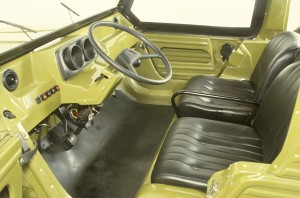
* Croix de Guerre Tchécoslovaque
* Ordre du Drapeau Rouge
* Ordre de Lénine
* Héros de l’Union Soviétique
* Mérite de la Guerre pour la Patrie
* Médaille “For the Victory over Germany in the Great Patriotic War 1941–1945”
Thanks for everything!
——
La Citroën Méhari est orpheline: Roland Paulze d’Ivoy de La Poype n’est plus
Né en juillet 1920 en Auvergne, le Comte Roland de la Poype est décédé ce 23 octobre à Saint Tropez à l’âge de 92 ans. Petit retour sur la vie de l’homme : A l’âge de 20 ans il s’en va en Angleterre une semaine après avoir entendu l’appel du général de Gaulle sur Radio Londres. IL fut d’abord membre de la Royal Air Force puis il sera volontaire pour le groupe de chasse Normandie-Niémen qu’il rejoint en novembre 1942 en Union Soviétique. Il restera en URSS jusqu’à la mi 1945. Après la guerre il devient attaché de l’air en Belgique puis en Yousgoslavie. Il quittera l’armée de l’air en début 1947 pour prendre la direction de la Société d’Etudes et d’Applications du Plastique (SEAP) et il en profite pour créer sa première usine de plasturgie au printemps de la même année. Son premier grand coup sera le Berlingot des shampoings DOP.
Il est un des grands acteurs du développement de l’industrie du plastique en France, notamment dans les secteurs alimentaires et agro alimentaires. Il sera aussi en 1970 le fondateur du Marineland d’Antibes et le maire d’une commune du Maine et Loire. Mais là où l’homme intéresse l’automobile, c’est qu’en 1967 il se rapproche du designer Jean Louis Barrault pour réaliser le design d’un véhicule léger, polyvalent, tout chemin accessible financièrement au plus grand nombre. Pour ne pas coûter cher, la voiture doit être développer sur une base existante sur laquelle il veut installer une carrosserie monobloc qui utilise un nouveau plastique, l’ABS ou Acrylonitrile Butadiène Styrène. La coque en plastique de couleur est ensuite fixé sur une structure tubulaire interne qui est boulonnée sur un chassis de 2 CV. Sa société SEAB (Société d’Exploitation et d’Application des Brevets) était spécialisée dans le thermoformage des plastiques et travaillait depuis la première moitié des années 60 pour la firme du quai de Javel en tant que sous-traitant. La SEAB produisait notamment les tableaux de bord de DS, les ailes arrière d’Ami 6 Break Service (VUL) et quelques pièces de finition.
